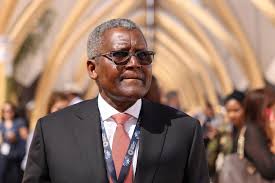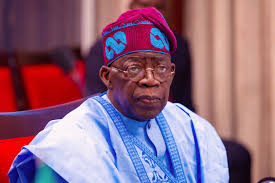The World Bank has reaffirmed its forecast for Nigeria’s economic growth at 3.6% for 2025, bucking a global trend that has seen the multilateral institution slash projections for nearly 70% of world economies in its latest Global Economic Prospects report released Tuesday.
The endorsement comes as the Washington-based institution painted a sobering picture of the global economy, cutting its worldwide growth forecast by 0.4 percentage points to just 2.3% for 2025.
Major economies, including the United States, China, and Europe, along with six emerging market regions, all saw their growth projections reduced from levels forecast just six months ago, before President Donald Trump’s inauguration.
Structural Reforms Beginning to Pay Dividends
For Nigeria, Africa’s most populous nation and largest economy, the World Bank’s maintained confidence reflects the early dividends of key macroeconomic reforms implemented to stabilize the business environment. The projection builds on an estimated 3.4% expansion in 2024, with growth expected to accelerate further to an average of 3.8% during 2026-27.
“Growth in Nigeria is forecast to strengthen to 3.6% in 2025,” the report stated, noting that domestic reforms have helped spur investment, particularly supporting growth in the services sector, especially financial services and information and communication technology.
The bank credited monetary policy tightening measures implemented in 2024 to address rapid currency depreciation, projecting that inflation will decline gradually as these measures take effect.
However, the institution warned that industrial sector growth will remain constrained by subdued crude oil production as last year’s modest rebound loses momentum.
Insulated from Global Trade Wars
In stark contrast to many economies worldwide, Nigeria and the broader sub-Saharan African region appear relatively insulated from escalating global trade tensions that have become a “significant headwind” for most countries.
The World Bank attributed this resilience to limited direct exposure to export markets in China and the United States, apart from commodity demand.
“The direct impact on SSA growth of further escalation in global trade tensions may be contained,” the report noted, explaining that the region exports relatively few manufacturing goods to the United States, limiting the direct effects of increased U.S. trade barriers.
Cautionary Notes Amid Optimism
Despite the positive growth outlook, the World Bank highlighted several structural challenges that could constrain Nigeria’s long-term economic potential. Chief among these is the persistent threat of violence, which continues to weigh on economic activity across the sub-Saharan region.
The institution also raised concerns about debt sustainability, noting that while public debt-to-GDP ratios are expected to decline gradually, elevated debt servicing costs continue to limit fiscal space for development-promoting expenditures.
This constraint has been exacerbated by recent rises in sovereign spreads and declining official development assistance inflows.
The Development Challenge
Perhaps most concerning for Nigeria’s long-term prospects is the employment challenge looming on the horizon. The World Bank projects that per capita income in Nigeria and sub-Saharan Africa will expand by just 1.6% annually through 2027, a pace insufficient to significantly reduce extreme poverty in a region that houses most of the world’s poor.
The demographic picture presents both opportunity and challenge. While Nigeria’s working-age population is set to rise rapidly over the next five years and nearly double between 2025 and 2050, representing the largest numerical increase any region has recorded over 25 years, the absence of policies to address structural bottlenecks threatens to leave millions without adequate employment opportunities.
Shifting International Partnerships
The growth projections come against a backdrop of changing international engagement patterns. Last week, U.S. Ambassador to Nigeria Richard Mills Jr. announced that American involvement in the region would pivot toward private sector-led investment rather than traditional aid, signaling a potential reduction in funding for certain critical services previously supported by U.S. assistance.
Climate and Commodity Risks
The World Bank also highlighted Nigeria’s vulnerability to external shocks, particularly noting that a worse-than-expected economic slowdown in China could adversely affect demand for minerals and metals, key exports for several sub-Saharan African countries.
Additionally, the share of the population affected by adverse weather events has increased sharply in recent years, destroying crops and dampening economic activity.
As Nigeria navigates these challenges while maintaining its growth trajectory, the country’s ability to leverage its demographic dividend while addressing structural constraints will likely determine whether it can translate economic growth into meaningful improvements in living standards for its more than 220 million citizens.
WHAT YOU SHOULD KNOW
The World Bank’s maintained confidence in Nigeria’s near-term prospects offers a measure of optimism, but the institution’s warnings about long-term structural challenges underscore the significant policy work that lies ahead for Africa’s economic giant.












